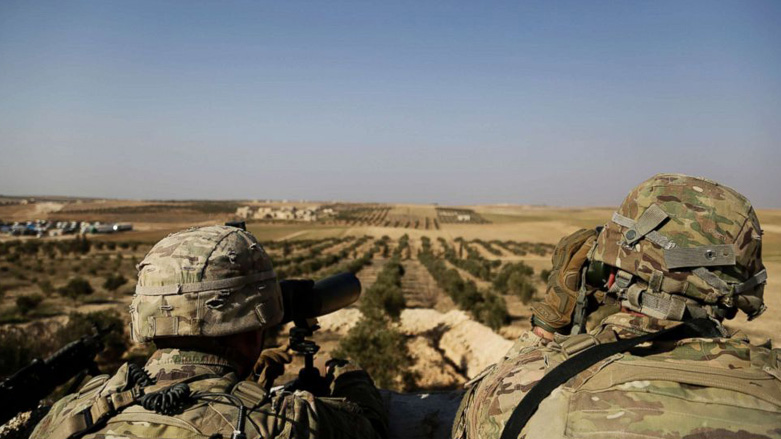US responds to attack in Syria, kills over 100 pro-regime troops

WASHINGTON DC, United States (Kurdistan 24) – Following an “unprovoked attack” on Tuesday against a “well established” headquarters of the Kurdish-led Syrian Democratic Forces (SDF) in eastern Syria, the US responded with air and artillery strikes, Combined Joint Task Force-Operation Inherent Resolve (CJTF-OIR) explained in a statement issued early on Thursday morning.
The enemy attack took place in the Middle Euphrates River Valley in Deir al-Zor Governorate, eight kilometers east of the river, which serves as a deconfliction line between the US-led coalition fighting the Islamic State (IS) in eastern Syria and the Russian-led coalition, focused on fighting the Syrian opposition to Bashar al-Assad, further to the west.
CNN reported that some 500 “Syrian pro-regime forces”—as US officials characterized the attackers—had used “T-54 and T-72 main battle tanks with supporting mortar fire” in a coordinated assault on the SDF position where US advisors are based.
One SDF member was wounded, while US personnel took no casualties.
The US estimates that more than 100 pro-regime forces were killed in the clash, even as the US did not pursue those forces that fled back across the Euphrates, making it appear as if the fight was very uneven, heavily favoring the US and its SDF partner.
At the end of last month, the US made a surprise announcement that it would remain indefinitely in the Syrian territory it has liberated from IS and create an SDF border force there.
The announcement prompted Russia, Syria, Iran, and Turkey all to state their opposition to the US plan.
US officials are uncertain as to the composition of the attacking force. It could have included Iranian-backed militias, which have proliferated in Syria and Iraq, as well as Russian contractors.
Over the preceding week, the US observed the military build-up and informed Russia of it, using a hotline intended to prevent conflict between the two powers.
Despite the fact that the force would have been in at least loose alliance with Moscow, the US’ communication with the Russians did not prevent the attack.
The clash occurred on the same day that the CJTF-OIR commander, Lt. Gen. Paul Funk, toured the city of Manbij with Special Forces commander for CJTF-OIR, Maj. Gen. Jamie Jarrad.
Manbij, the Western-most point of the coalition presence in Syria, is threatening to become a flashpoint between US and Turkish forces, and Funk warned, “You hit us, we will respond aggressively. We will defend ourselves.”
Manbij is administered by the Manbij Military Council (MMC), which is majority Arab, but trained by the Kurdish People’s Protection Units (YPG). Key MCC figures, including its head, are Kurdish.
Reporters accompanying the two generals described a thriving city, the market thronged with shoppers and a population friendly to US troops.
Gen. Funk, “a veteran of Iraq and other deployments, said Syria had been ‘delightful’ by comparison,” the New York Times reported.
Of course, the Kurdistan Region of Iraq could be described in similar terms. The people are friendly to Americans, and as National Security Adviser, H.R. McMaster described the Region to a Washington audience last December, it is “vibrant,” with “beautiful cities in Sulaimani, Erbil, and Dohuk.”
In Syria, the US has chosen to protect such a population. However, in Iraq, the US has made the opposite decision, subordinating the Kurdish population to a dubious government in Baghdad, itself beholden to a hostile regime in Tehran, which the US opposes almost everywhere else.
Editing by Nadia Riva
